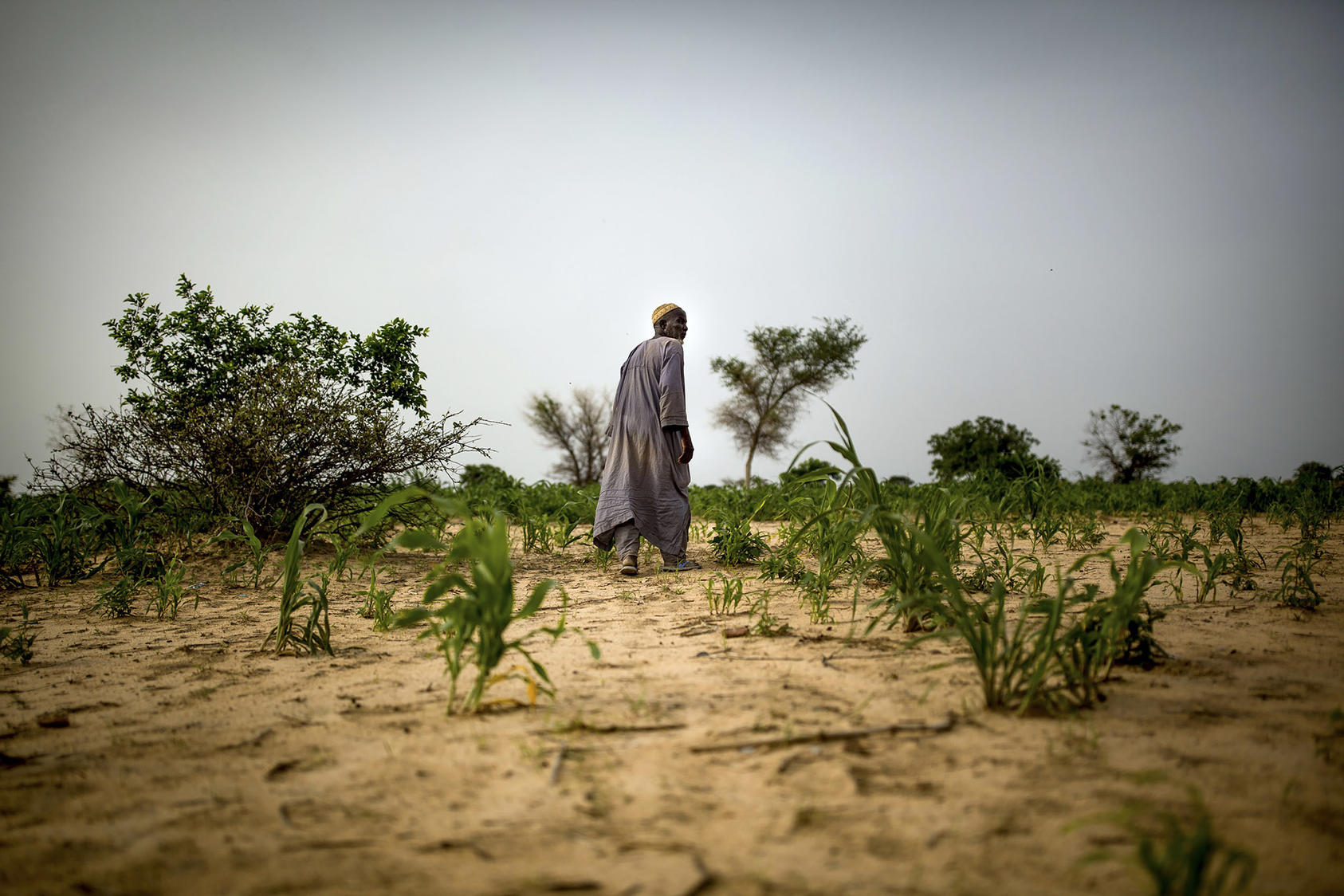Facing Climate-Driven Migration and Displacement Head-On
It’s time for Washington to begin preparing for climate-induced migration on an unprecedented scale.
In the run-up to the COP26 summit on climate change, the U.S. government released its Report on the Impact of Climate Change on Migration on October 21 — one of three major climate reports, along with the National Intelligence Estimate and the climate risk analysis by the Department of Defense, from the Biden administration. With these reports, the U.S. government now formally recognizes that climate change is likely to contribute to significant displacement and migration, and with it, political and social instability that jeopardize U.S. interests.

How to Tackle Climate-Based Migration
What the U.S. government does not do, however, is lay out a pathway for its international engagement with specific, agreed-upon roles and responsibilities in tackling this global problem. Environmental disasters displaced 30.7 million people in 2020, in comparison to 9.8 million displaced by conflict. The World Bank estimates that 143 million people could be on the move due to climate change by 2050 (merely one generation away) in just three regions of the world — sub-Saharan Africa, South Asia and Latin America. This is at least two times larger than the impacts of World War II.
Migration has historically been a positive and adaptive response to climate and environmental change. And it can continue to be so, when a safe and orderly pathway is available. However, building that pathway will require a level of international cooperation that does not yet exist.
According to the International Organization for Migration, the least developed countries (LDCs) — some of which are among the most vulnerable to climate change — will be tackling their own internal displacement due to climate change at the same time they absorb displaced peoples from neighboring countries. This “double stress” will strain their institutional capacity and financial resources at a time when the impacts of climate change will increasingly become a dire issue. While small-island developing states have been a key focus of international attention, land-locked LDCs, mostly located in arid geographies and heavily dependent on rain-fed agriculture, also face significant risks.
Beyond Recognition: Generating U.S. and International Engagement on Displacement Issues
As the United States re-engages the international community on climate change, it has primarily focused its partnership activities on strengthening commitments to a net-zero future. While this is a critical goal, it does nothing to address the risks that countries are currently confronting as greenhouse gas emissions continue to rise over at least the next few decades.
The United States needs to turn a recognition of these global security threats into active international engagement on displacement and migration in a way that will make it a credible and long-term partner, especially for countries facing the greatest existential threats. Because the report on migration did not lay out specific activities or commitments, there is a perception, likely widely held, that the United States does not care about the climate threats that many countries face. In order to succeed at its COP agenda around reducing greenhouse gases, it will need the partnership not only of the major emitters but also of those countries facing the largest threats from climate change — and in turn, those countries will need to see serious engagement on the issues important to them. Many of these issues are bundled into the area of negotiations around “loss and damage,” which refers to the climate impacts that go beyond what human society can realistically adapt to.
In the first stages, this means initiating open and honest dialogues with affected countries and communities and demonstrating a willingness to learn from their experiences and to hear about their values and priorities in order to build trust and commitment. It also means continuing to engage on developing international frameworks to provide safe and orderly pathways out of vulnerable geographies. This requires international, regional and domestic legal frameworks that formally recognize the impacts of climate change, consider the desires and values of the departing communities, and support the provision of social,
Although many assume that migration will initially be in-country or within a region, the international community must begin to prepare now for larger international movements to safer geographies — which means building support for migration to more developed countries and addressing the xenophobic and
Keeping People in Their Homes Through Evidence-Based and Transformative Investments
Secondly, the United States and others need to invest more in keeping people in their homes. While the United States is one of the largest bilateral donors in the world, the international community lacks a strong evidence-base for understanding when and how investments in resilience, disaster risk reduction and
However, current global investments in climate change adaptation have been heavily weighted toward incremental change — which may be too limited in scope when addressing climate and environmental change on the scale that many communities are currently facing.
It will be increasingly critical to evaluate whether investments actually reduce the departure of community members in the face of both environmental disasters and slow-onset climate change. It may also be more and more important to consider supporting transformative adaptation — which involves broad systems change, rather than incremental change, and will rely not only on science and technology but also on behavior change and other cultural shifts. This type of adaptation may be most critical in reaching the people left behind, often the poorest of the poor, with no resources to support migration.
Displacement is much more obvious when it’s in response to a sudden-onset environmental emergency such as storms or floods. But it’s more pernicious when it’s in response to slow-onset climate change — such as major changes in ecosystems, water flows and patterns of disease for humans, animals and crops — where it may be difficult to confidently say that climate change is driving migration. Yet these are the changes that the global community, including the United States, must increasingly be prepared to face.



